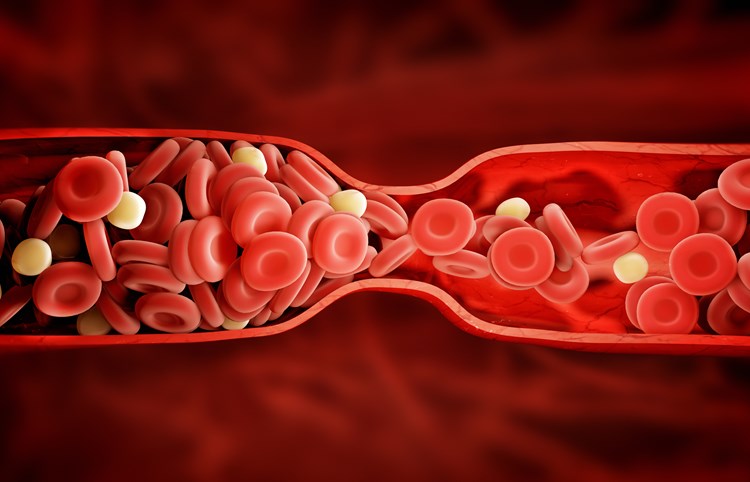Hey, friends, as you all know, when we get hurt and injured, we bleed. After some time, the bleeding stops. The mechanism that helps us in stopping the bleeding is our defense mechanism, and it causes the blood to clot. This mechanism is called blood clotting or blood coagulation.
Do you Know How the blood Clotting/Coagulation takes place?
Two independent pathways involved in blood clotting:
- The Extrinsic Pathway
- The Intrinsic Pathway
- The Extrinsic Pathway is the initial or primary process of blood clotting, as the name itself suggests that extrinsic factors are not present in the blood.
- All the factors involved are intrinsic, meaning they are present within the blood.
Both the factors, Extrinsic and Intrinsic, are coupled together.
Both the factors, Extrinsic and Intrinsic, are coupled together.
Before moving further here is the list given below is the blood clotting/coagulation factors.
The coagulation factors are proteins formed in the liver.
Factor I – fibrinogen
Factor II – prothrombin
Factor III – tissue thromboplastin (tissue factor)
Factor IV – ionized calcium ( Ca++ )
Factor V – labile factor or proaccelerin
Factor VI – unassigned
Factor VII – stable factor or proconvertin
Factor VIII – antihemophilic factor
Factor IX – plasma thromboplastin component, Christmas factor
Factor X – Stuart-Prower factor
Factor XI – plasma thromboplastin antecedent
Factor XII – Hageman factor
Factor XIII – fibrin-stabilizing factor
The intrinsic pathway works spontaneously, and internal damage or injury of the vascular endothelium responds by this intrinsic pathway, The extrinsic pathway is activated in response to external trauma, initiating the secondary process. Both intrinsic and extrinsic pathways are coupled together. The clotting factors that participate in the intrinsic pathway are XII, XI, IX, and VIII, and the clotting factors that participate in the extrinsic pathway are VII and III. The common pathway includes clotting factors X, V, II, I, and XIII.
The clotting factors of intrinsic pathways I, XII, XI, IX, and VIII are also recognized as the Hageman factor, plasma thromboplastin antecedent, Christmas factor, and anti-hemophilic factor A, correspondingly. In the extrinsic pathway, factors VII and III are also recognized as stabilizing factors and tissue factors, correspondingly. The common pathway factors X, V, II, I, and XIII are also well-known as Stuart-Power factor, proaccelerin, prothrombin, fibrinogen, and fibrin-stabilizing factor, in that order. Clotting Factor IV is a Calcium ion and is pivotal in all three pathways of blood clotting. Markedly, certain clotting factors, namely II, VI, IX, and X, operate as serine proteases.
The clotting mechanism comprises two stages:
Primary hemostasis involves weak platelet plug formation.
Secondary hemostasis: Weak platelet plug Stabilized into a clot by the network of fibrin.
Primary Hemostasis
Weak platelet plug formation takes place in primary hemostasis. Four phases participate in the weak platelet plug formation: 1. vasoconstriction, 2. platelet adhesion, 3. platelet activation, and 4. platelet aggregation.
Secondary Hemostasis
The weak platelet plug formed in the primary hemostasis becomes more stabilized in the secondary hemostasis. All the clotting factors in secondary hemostasis work in a cascade manner. The three tasks (a) Initiation leading to the activation of clotting factors, (b) Activation of prothrombin to thrombin, and (c) Activation of fibrinogen to fibrin collectively contribute to the stabilization.
Initially, these tasks are achieved through one of two pathways: the extrinsic pathway and the intrinsic pathway. These pathways converge upon the activation of factor X, subsequently completing their respective functions through the common pathway.
The common pathway is triggered by the activation of Factor Xa. When Factor Xa interacts with Factor Va and calcium on phospholipids surfaces, it forms a prothrombinase complex, leading to the activation of prothrombin (also known as Factor II) and its conversion into thrombin. Thrombin activation involves the serine protease cleaving of prothrombin. Subsequently, thrombin plays a crucial role in activating Factor XIIIa (FXIIIa), which, in turn, cross-links with fibrin to generate a stabilized clot.
What is hemophilia?
Hemophilia is a bleeding disorder inherited from parents to the offspring. In hemophilia, blood clotting does not accrue properly. In simple words, we can say that the bleeding will become difficult to control.
In the event of a blood vessel injury, specific proteins known as ‘clotting factors’ work to manage blood loss by sealing or repairing the wound. Individuals with hemophilia experience reduced levels of clotting compared to normal.
There are 2 types of hemophilia.
Hemophilia A The other name is classic hemophilia; this type is the most found. This is due to the deficiency of clotting factor 8.
Hemophilia B The other name is Christmas disease. This is due to the deficiency of clotting factor 9.
Each type requires different clotting factor treatment.
Certain individuals experience a mild form of hemophilia, whereas others may be severely affected by the condition.
Conclusion
Blood clotting, also known as blood coagulation, is the body’s most crucial defense mechanism against blood loss. 13 Blood clotting factors play a pivotal role in this process. The clotting occurs through two pathways: intrinsic and extrinsic. Both pathways activate factor Xa, which then participates in the final common pathway, leading to the activation of prothrombin into thrombin. Ultimately, fibrinogen is transformed into a fibrin clot.
The absence or deficiency of any of the 13 clotting factors can result in disorders. One well-known bleeding disorder is Hemophilia, which has two types: Hemophilia A (Factor VIII deficiency) and Hemophilia B (Factor IX deficiency). Individuals may experience varying degrees of severity, ranging from mild to severe conditions. If anyone suspects that they or their children have a prolonged blood clotting time compared to normal, it is essential to seek immediate medical attention and consult with doctors.

